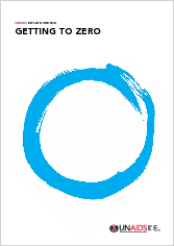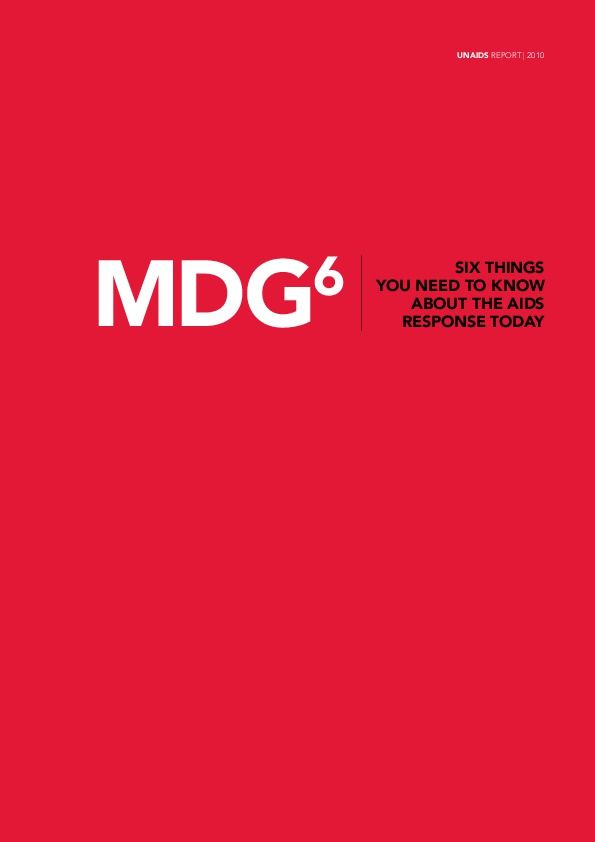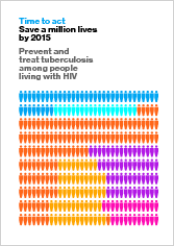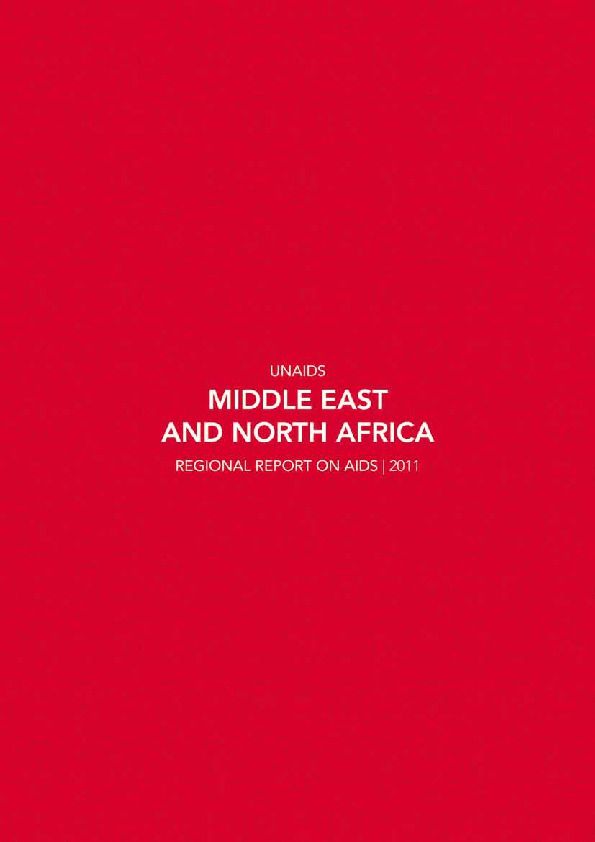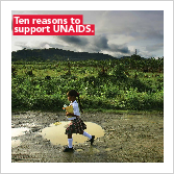Documents
UNAIDS Report on the Global AIDS Epidemic 2010
23 November 2010
The 2010 edition of the UNAIDS Report on the global AIDS epidemic includes new country by country scorecards on key issues facing the AIDS response. Based on the latest data from 182 countries, this global reference book provides comprehensive analysis on the AIDS epidemic and response. For the first time the report includes trend data on incidence from more than 60 countries.
Documents
UNAIDS 2011–2015 Strategy: Getting to zero
21 December 2010
Documents
MDG6: Six things you need to know about the AIDS response today
21 December 2010
There is a lot to be hopeful for as we approach the milestone of reaching the Millennium Development Goals by 2015. Much has been achieved—fewer people are dying of AIDS-related illnesses and the rate of new HIV infections has fallen by more than 17% since 2001. Recent breakthroughs in HIV prevention research – such as a woman initiated and controlled microbicide gel combined with the increasing scale up of male circumcision—hold promise for both women and men to protect themselves from HIV.
Documents
AIDS at 30: Nations at the crossroads
02 June 2011
This report provides evidence of how much we have achieved and weighs that against our vision for the future: zero new HIV infections, zero discrimination and zero AIDS‑related deaths. In these pages you will find scientific analysis, personal insights and the results of extensive national and regional consultations at the front lines of the AIDS response. While perspectives differ, one simple truth emerges: we cannot break the arc of this epidemic – where five people were newly infected for every three starting treatment in 2010 – if we adopt a 'business as usual' approach.
Documents
Time to act: Save a million lives by 2015 - Prevent and treat tuberculosis among people living with HIV
06 June 2011
We live in a time of unprecedented hope for the 33.3 million people living with HIV worldwide. Antiretroviral therapy (ART) offers the promise of a full and fulfilling life. Now people living with HIV can raise their families, work and pursue their dreams. But a thief is in our midst—one that is routinely robbing people, and the countries they live in, of their futures. Every minute, three people living with HIV have their lives snatched away by tuberculosis (TB). Africa, hit hard by HIV, is also hit hard by TB. TB is the main cause of death in people living with HIV.
Documents
UNAIDS 2011 World AIDS Day report
21 November 2011
A new report by the Joint United Nations Programme on HIV/AIDS (UNAIDS), released on 21 November, shows that 2011 was a game changing year for the AIDS response with unprecedented progress in science, political leadership and results. The report also shows that new HIV infections and AIDS-related deaths have fallen to the lowest levels since the peak of the epidemic.
Documents
Global HIV/AIDS Response - Progress Report 2011
30 November 2011
Documents
UNAIDS Data Tables 2011
02 December 2011
The data tables describe in greater detail the progress being made against the HIV epidemic and the main challenges to achieving zero HIV infections and zero AIDS deaths. The data are drawn from country progress reports and will be updated regularly. This document reflects information found in the publication ‘Global HIV/AIDS response: epidemic update and health sector progress towards universal access: progress report 2011’, by UNAIDS, UNICEF and WHO.
Documents
Middle East and North Africa - Regional Report on AIDS: 2011
04 December 2011
In the Middle East and North Africa (MENA) region, the HIV epidemic has been on the rise since 2001. Although the overall HIV prevalence in the region is still low, the rise in new infections has put MENA among the top two regions in the world with the fastest growing HIV epidemic. The rise in the estimated number of people living with HIV in the region presumably is the result of an increased HIV prevalence among key populations at higher risk and a forward transmission of the virus to a larger number of individuals who are generally at lower risk of infection.


